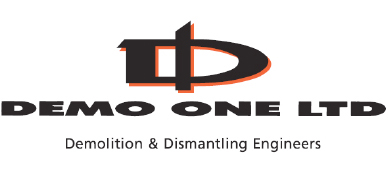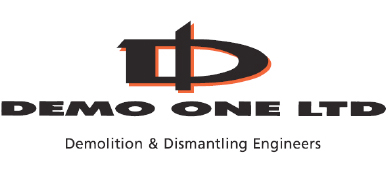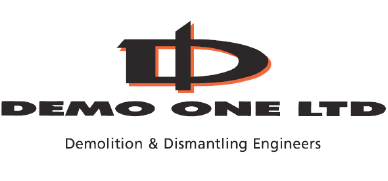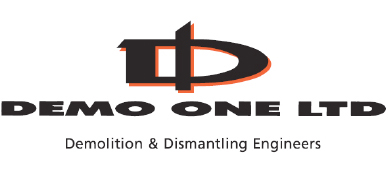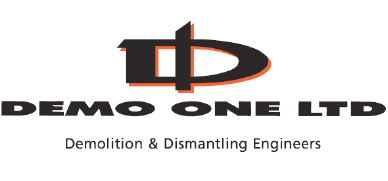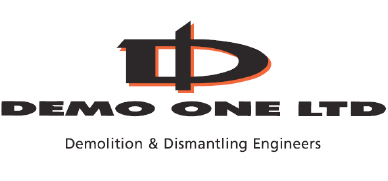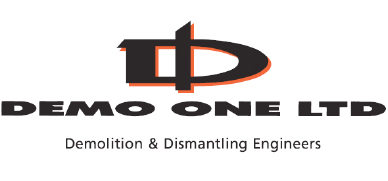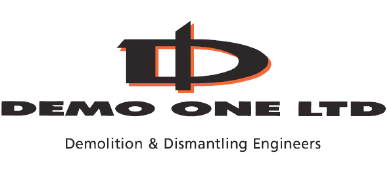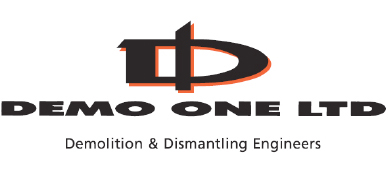Title Page
-
Project Name
-
Job Number
-
Date
-
Enter Name of Demo One/Agency Operative Under Assessment
-
Assessors Name
Operative Test Paper
PHOTO: Clean-shaven Operative
-
Photo of Operative
MODULE 1: Types uses and risks of ACMs
-
Question 1. Someone who smokes and is exposed to asbestos is?
-
A. 2 times more likely to contract lung cancer
-
B. 5 times more likely to contract lung cancer
-
C. 53 times more likely to contract lung cancer
-
D. 100 times more likely to contract lung cancer
-
Question 2. Asbestos is a natural fibre which is extracted from?
-
A. Plant
-
B. Plastic
-
C. Rock
-
D. Solvent
-
Question 3. How can you prevent ill-health through asbestos related diseases?
-
A. By reducing your exposure to asbestos fibres
-
B. By closing doors and breathing asbestos fibres
-
C. By wearing overalls
-
D. By increasing the amount you smoke
-
Question 4. Which of the following asbestos products presents the highest risk of fibre release?
-
A. Floor tiles
-
B. Textured Coating (Artex)
-
C. Sprayed Coating
-
D. Cement roof sheets
-
Question 5. Asbestos containing materials should not be found in buildings built?
-
A. After 1974
-
B. After 1985
-
D. After 1991
-
C. After 1999
MODULE 2: Health hazards of asbestos
-
Question 1. Asbestos is dangerous because?
-
A. Contains fibres which are harmful to lungs
-
B. Can be poisonous if swallowed
-
C. Gives off toxic fumes
-
D. Cause chemical burns
-
Question 2, Exposure to asbestos fibres is best prevented by?
-
A. Avoid disturbing asbestos
-
B. Using correct RPE
-
C. Removing asbestos wet
-
D. Using H-type vacuum cleaners
-
Question 3. Generally asbestos related diseases can take up to?
-
A. 5-10 years to develop
-
B. 10-15 years to develop
-
C. 15-20 years to develop
-
D. 15-60 years to develop
-
Question 4. Unprotected exposure to asbestos can lead to?
-
A. Mesothelioma
-
B. Lung cancer
-
C. Asbestosis
-
D. All of the above
-
Question 5. Medical examinations for asbestos removal operatives are required?
-
A. Every year
-
B. Every 3 years
-
C. Every 2 years
-
D. Every time you change employer
MODULE 3: Legislation
-
Question 1. Who does the Control of Asbestos Regulations 2012 apply to?
-
A. Employees only
-
B. Employers only
-
C. Employees and Employers
-
D. None of the above
-
Question 2. Under the Control of Asbestos Regulations 2012, which of the following should employees be entitled to receive?
-
A. Information, instruction and training relating to asbestos exposure
-
B. Information about the uses and likely occurrences of asbestos in buildings
-
C. Their medical certificate
-
D. All of the above
-
Question 3. The Control of Asbestos Regulations 2012 apply to?
-
A. Only sprayed coating
-
B. Only big jobs
-
C. Only notifiable contracts
-
D. All work with asbestos
-
Question 4. Under the Control of Asbestos Regulations 2012, checks should be made on control measures at least?
-
A. Daily
-
B. Weekly
-
C. Monthly
-
D. Yearly
-
Question 5. The decontamination procedure found in HSG210 Asbestos Essentials is limited to?
-
A. Short duration asbestos work that does not require a licence
-
B. Long duration asbestos work that requires a licence?
-
C. Only work that has been notified to the HSE
-
D. Only work that has been notified to the Environmental Agency
MODULE 13: Non-asbestos hazards
-
Question 1. Which extinguisher should be used on a electrical fire?
-
A. CO2
-
B. Water
-
C. Wet chemical
-
D. Foam
-
Question 2. What is the definition of a hazard?
-
A. The chance of the boss catching you taking a break from work
-
B. Something that has the potential to do harm
-
C. The likelihood of injury from a dangerous situation
-
D. None of the above
-
Question 3. What does COSHH stand for?
-
A. Constant overtime supports higher handouts
-
B. Construction of steel hardened hangers
-
C. Control of substances hazardous to health
-
D. None of the above
-
Question 4. What are the elements of a fire triangle?
-
A. Heat, fuel and oxygen
-
B. Heat, smoke and flames
-
C. Oxygen, carbon dioxide and methane
-
D. Rock, paper and wood
-
Question 5. Section 7 of the Health and Safety at Work etc. Act 1974 states individuals are given clear legal duties to?
-
A. Take care of themselves
-
B. Take care of others
-
C. Cooperate with their employer and others with statutory duties under the act
-
D. All of the above
MODULE 14: Fault finding
-
Question 1. How do you know if there is sufficient negative pressure within the enclosure?
-
A. By experience
-
B. By checking the gauge on the NPU
-
C. By making sure the NPU is opposite the airlock
-
D. By checking that the airlock flaps are being sucked inwards
-
Question 2. Which of the following requires checking on a full face power assisted respirator?
-
A. Visor
-
B. Power supply
-
C. Diaphragm exhalation valve
-
D. All of the above
-
Question 3. Viewing panels on enclosures should be?
-
A. Minimum 600mm x 300mm and taped on the outside
-
B. Minimum 600mm x 300mm and taped on the inside
-
C. Minimum 600mm x 300mm and taped on both sides
-
D. None of the above
-
Question 4. When checking the 3-stage airlock where should the vision panel be?
-
A. No requirement to fit one
-
B. The outer stage furthest from the enclosure
-
C. The middle stage
-
D. The inner stage nearest the enclosure
-
Question 5. Although all the following answers are correct, what must be in place prior to starting asbestos removal work?
-
A. A fully operational DCU
-
B. An enclosure smoke test inspection
-
C. RPE inspection
-
D. The asbestos is wet
MODULE 15: Roles and responsibilities
-
Question 1. Who is responsible for issuing an asbestos operative with RPE?
-
A. No one
-
B. My trade association
-
C. The company that does the air testing
-
D. My employer
-
Question 2. Who needs to know what the POW says?
-
A. The client
-
B. The main contractor
-
C. The operatives
-
D. The local authority
-
Question 3. Supervisors should perform?
-
A. Regular toolbox talks
-
B. Driving licence checks
-
C. Medical checks on operatives before they begin work
-
D. Face fit tests on operatives before they begin work
-
Question 4. If the work method changes from the POW, what action (if any) needs to be taken?
-
A. Stop work and inform the supervisor immediately
-
B. Nothing, as long as the work can be carried out safely
-
C. Complete the work and inform the contract manager of the changes made
-
D. Speak directly to the client before continuing
-
Question 5. Who is allowed to consider changes to the POW?
-
A. The persons stated in the POW
-
B. The safety officer
-
C. A contracts manager
-
D. A supervisor
MODULE 16: Site inspections and record keeping
-
Question 1. RPE is inspected on site. Why?
-
A. The supervisor must be there to ensure it is done properly
-
B. The operative should ensure the RPE is fit to be used immediately prior to use
-
C. Inspections done in the yard or at home may not be valid
-
D. The RPE should always be on site
-
Question 2. The names of operatives and their time in the enclosure is recorded for?
-
A. Pay records
-
B. Health records
-
C. Sickness records
-
D. Hot work records
-
Question 3. How often should RPE be examined by a competent person?
-
A. Hourly
-
B. Daily
-
C. Weekly
-
D. Monthly
-
Question 4. Health surveillance records should be kept for how long?
-
A. 2 years
-
B. 10 years
-
C. 25 years
-
D. 40 years
-
Question 5. How often should NPUs be examined when on site?
-
A. Daily
-
B. Weekly
-
C. Monthly
-
D. Only if broken or not working properly
MODULE 17: Management systems and monitoring
-
Question 1. How often would hygiene units be inspected and the information recorded when in use?
-
A. Once a year
-
B. Every 6 months
-
C. Every 2 weeks
-
D. Daily
-
Question 2. How often should H-type vacuums be inspected when in use?
-
A. Daily
-
B. Every 2 weeks
-
C. Every 6 months
-
D. Once a year
-
Question 3. Prior to any work starting, what should be fully set up and working?
-
A. The site stores
-
B. Generators
-
C. DCU
-
D. RPE
-
Question 4. How often should a NPU be DOP tested?
-
A. Daily
-
B. Weekly
-
C. Every 6 months
-
D. Once a year
-
Question 5. How often should a H-type vacuum be DOP tested?
-
A. Only when it is broken
-
B. Every 6 months
-
C. Weekly
-
D. Daily
MODULE 18: RAs and POWs
-
Question 1. When is a POW needed?
-
A. For all work with asbestos
-
B. Only when the work is notified to the HSE
-
C. Only for work with amphiboles
-
D. When requested by the client
-
Question 2. Risk Assessments?
-
A. Should be given to the HSE before any work starts
-
B. Are only there because the client wants them
-
C. Are a way of identifying hazards and then eliminating them or reducing the risk from them
-
D. Do not effect members of the public
-
Question 3. The POW must be?
-
A. Signed by each operative
-
B. Read by each operative
-
C. Understood by each operative
-
D. Read by the supervisor
-
Question 4. Which of the following should be included in the POW?
-
A. Operatives national insurance numbers
-
B. Details of the nearest 24-hour A&E Department
-
C. Squibb Groups previous POWs from other jobs
-
D. Waste van vehicle tax details
-
Question 5. Which of the following must be on site at all times during the asbestos removal works?
-
A. A copy of the asbestos license
-
B. Insurance certificates for the Squibb Group vehicles
-
C. Clearance certificate from the last job
-
D. National insurance cards for all operatives
MODULE 19: Information, instruction and training
-
Question 1. Employers are required to provide which of the following?
-
A. Appropriate information, instruction and training
-
B. Appropriate information, instruction and a weekly wage
-
C. Tea breaks and free lunches
-
D. Information on a need to know basis, daily performance review and a weekly wage
-
Question 2. Where must training certificates be kept?
-
A. They must be verified for validity and on site at all times
-
B. With the HSE until needed
-
C. Displayed on the wall in Squibb House
-
D. At home
-
Question 3. Who must attend annual asbestos refresher training?
-
A. Managers and Directors
-
B. Supervisors
-
A. Managers and Directors
-
D. All of the above
-
Question 4. Refresher training should aim to achieve which of the following?
-
A. Re-run of initial training
-
B. Give new information and share good and bad practice
-
C. To enable an employee to get a CSCS card
-
D. To meet and discuss H&S issues
-
Question 5. Respirators should be checked?
-
A. Daily
-
B. Weekly
-
C. When you feel like it
-
D. When it looks like it needs it
OFFICE / ASSESSOR USE ONLY
-
Assessment for Module 1
- Pass: good knowledge well trained
- Fail: immediate training required
- Pass: but supervision required
-
Assessment for Module 2
- Pass: good knowledge well trained
- Fail: immediate training required
- Pass: but supervision required
-
Assessment for Module 3
- Pass: good knowledge well trained
- Fail: immediate training required
- Pass: but supervision required
-
Assessment for Module 13
- Pass: good knowledge well trained
- Fail: immediate training required
- Pass: but supervision required
-
Assessment for Module 14
- Pass: good knowledge well trained
- Fail: immediate training required
- Pass: but supervision required
-
Assessment for Module 15
- Pass: good knowledge well trained
- Fail: immediate training required
- Pass: but supervision required
-
Assessment for Module 16
- Pass: good knowledge well trained
- Fail: immediate training required
- Pass: but supervision required
-
Assessment for Module 17
- Pass: good knowledge well trained
- Fail: immediate training required
- Pass: but supervision required
-
Assessment for Module 18
- Pass: good knowledge well trained
- Fail: immediate training required
- Pass: but supervision required
-
Assessment for Module 19
- Pass: good knowledge well trained
- Fail: immediate training required
- Pass: but supervision required
